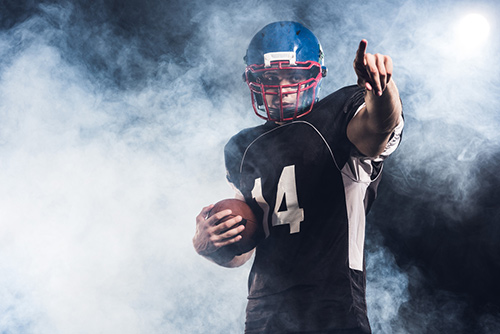
Multiple studies published in the Journal of the American Academy of Orthopaedic Surgeons highlighted key factors parents and coaches need to consider when addressing youth sports. These studies established two major takeaways that can’t be ignored: the frequency of certain injuries vary by sex and single-sport athletes are more susceptible to injury than their multi-sport peers.
Males and females have different risk factors for experiencing sports-related injuries. This is important for not only orthopedic surgeons, but trainers, coaches, parents and anyone else involved with a young athlete’s health, as strategies for training and avoiding injuries are different for each sex.
A review article published in the American Academy of Orthopaedic Surgeons looked at five common sports-related injuries—stress fracture, ACL tear, shoulder instability, concussion, and femoroacetabular impingement—and found differences amongst the sexes.
Males accounted for 71 percent of the studied sports-related injuries reviewed in the author’s study. It also found that females are more susceptible to overuse injuries, where males are more susceptible to traumatic events like fractures. Female landing patterns after a jump leave them more susceptible to ACL tear, but training programs can be used to prevent ACL injuries by modifying landing patterns. The article also highlighted that females are more susceptible to concussions. While this could be due to anatomical factors, there is still much to be interpreted, but it also could be due to females reporting concussion-like symptoms more frequently than males, who are more likely to avoid reporting symptoms.
Athletes who participate in one, year-round sport are more likely to experience overuse injuries due to the repetitive movements. It’s recommended that athletes take at least three consecutive months off from a sport to recover from the movements. Multi-sport athletes are less likely to experience burnout and gain an advantage by accumulating cross-sport skills, such as coordination, balance, endurance, and explosiveness, to name a few. In addition, a relatively recent 2016 survey from the NCAA found that 71 percent of Division-I men’s football players were multisport athletes, as well as 87 percent of Division-I female and 91 percent of male runners.
But single-sport and multisport athletes do experience success at different periods. Single-sport athletes experience peak level performance earlier than multisport athletes. Multisport athletes experience peak performance during the college and professional ages, whereas single-sport athletes tend to experience peak performance earlier. Most of us are not capable of competing at levels beyond high school. If your young athlete has the potential to perform beyond the high-school level, then there’s no point to specialize in one sport. If they want to win a state championship, specialization might be the best option. But keep in mind the injury factors with single-sport athletes, as overuse injuries can have lasting effects if severe enough.
What parents can do to avoid these injuries:
Stretching warms up the muscles and prepares them for any upcoming physical activity. In addition, the increased flexibility allows the muscle more opportunity to handle awkward landings or hard falls. Some may believe that stretching before competition hinders explosiveness, but not stretching leaves athletes more susceptible to pulls, strains, and tears. You can’t be explosive on the field if you’re injured on the sideline.
Strength training muscles is a great way to prevent injuries, especially for ligaments holding joints together. For instance, strengthening the muscles around the knee allows the muscles to bear more weight and pressure, alleviates pressure from the joint and ligaments and reduces the likelihood of tears. In fact, if an athlete does tear an ACL, one of the cornerstones of their physical therapy is to strengthen the surrounding muscles.
Improving coordination can help athletes navigate the field or court. This can be done through multiple sports by gaining cross-sport skills or direct exercises, which will help single-sport athletes. Awkward falls and hard hits can be less damaging if an athlete is well in-tuned with their body and coordination.
Take some time off of direct training. As mentioned above, taking three months off of direct training helps prevent overuse injuries. A young athlete’s body is already under stress from puberty, and playing multiple sports only magnifies this. Young athletes can perform at optimal levels and avoid injury by allowing their body to fully recover.

